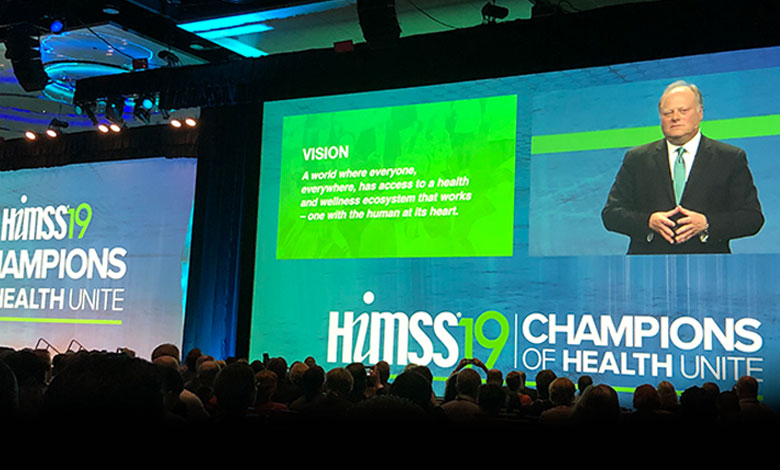The theme of HIMSS19 in Orlando was “Champions of Health Unite,” and that sense of unity was palpable during the opening keynote, an event that included a veritable who’s who of healthcare IT:
- Manish Kohli, M.D., Chair of the HIMSS Board of Directors
- Christopher Ross, CIO at Mayo Clinic
- Hal Wolf, President and CEO of HIMSS
- Seema Verma, CMS Administrator
- Governor Michael Leavitt, Former HHS Secretary
- Karen Desalvo, Former National Coordinator for Health IT
- Aneesh Chopra, Former U.S. CTO
As Governor Michael Leavitt observed, there were members of the panel discussion who had served both Republican and Democratic administrations, and despite their political differences, all were united under a single purpose: improving health and healthcare. Prior to the panel discussion moderated by Hal Wolf, CIO-turned-patient Christopher Ross bravely shared an intensely personal story of his ongoing battle with cancer, and remarked in terms of the need for continued improvement and transformation within healthcare, “If not us, who? If not now, when?”
Change is everywhere in the information technology industry—not just healthcare—and all tend to agree that the pace of change is only accelerating. Healthcare has been both driving and driven by intense change, since those early steps were taken with the HITECH act a decade ago. And as Aneesh Chopra noted, that interim final rule included a seemingly basic requirement for a summary of the patient record to be made available in a machine-readable format. Substantial progress has obviously been made in the years since, and $36 billion or so in government funds spent, but much work remains.
Christopher shared that we now need to, “Use information not just to automate, but to transform healthcare. We’ve only reached base camp and the summit is still ahead.”
We need systems that are more usable, and to apply advanced technology to healthcare, but as Michael Leavitt also observed, “The tyranny of the urgent can crush the vital.”
So where do we go from here? Hal Wolf outlined the numerous challenges that still exist, including an aging population, chronic disease burden, ever-growing healthcare staff shortages, and numerous other issues. The vision presented by Hal, “one world where everyone, everywhere has access to a health and wellness ecosystem that works—one with the human at its heart,” is an ideal that will require considerable effort, energy, and time to deliver upon, but it’s clearly an ideal worth pursuing.
How we care for our communities is an evolving concept, and Michael noted that how we define a community is a question that has not yet been answered, and we won’t know how to define the term until we have the kind of data needed to inform the decision. Karen Desalvo said, “Health is more than just healthcare. We need more sources of data than just the health record.” Social determinants of health like air quality and other non-medical factors are huge contributors to the health and well-being of a population, and there is still much to be learned from and about these contributing factors.
Improving the health of our communities and solving our healthcare IT challenges will take an ongoing and collaborative effort—public and private sector working closely to establish new standards and identify pathways forward. “Champions of Health Unite” is indeed an inspiring message—one that should cause those of us in the vendor community to unleash our inner champions as we work on behalf of our clients to help them to solve for current and future healthcare IT issues on the battlefields of healthcare.

